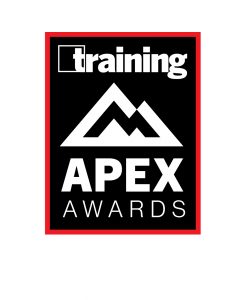
Electrical construction services company Rosendin developed its Public Speaking and Communication course to help employees who had not previously been in leadership or outward-facing roles to understand different areas of public speaking, facilitation, training, and communication and to learn skills that can be implemented immediately on the jobsite.
This is the first such program covering these topics that Rosendin released to both office and field personnel. Many field general foremen and foremen oversee teams of apprentice and journeyman electricians, so this course provides them with the skills necessary to effectively mentor and teach others in the trade.
Program Details
The course can be delivered in either a two-day, four-hour format or a single day of eight hours. The program covers 12 different areas of public speaking and communication. In this interactive course, participants not only learn the skills but implement them through practice. The course consists of teaching subject matter, followed by immediate interaction and participant engagement.
During the Public Speaking and Communication course, individuals are asked to jump out of their comfort zone and speak in front of their peers and coworkers to gain constructive feedback on best practices. Throughout the course, the group is provided different work- and non-work-related topic areas that they learn about, and, in turn, present on. After a subject is taught, the participants stand in front of the class, present on the topic, and are video-recorded. Then the group watches the videos back and provides real-time constructive critique and feedback. Likewise, participants can watch themselves present in real time and see the things they are doing well and the areas for growth and improvement
Within one week after the course finishes, facilitators reach out to the participants via e-mail with a one-page printable flyer that has quick tips for public speaking. The facilitators also created a LinkedIn Learning Path that is sent to participants so they can reinforce the content at their own pace. Program facilitators reach out to each individual participant with specific feedback on their presentations and a link to their video-recordings, and schedule a follow-up meeting to review the presentations.
Participants from the first class are provided with a second, more advanced, course module within the first year. The second module provides further learning of facilitation and presentation information.
Results
Surveys sent to managers showed a 48 percent improvement in team communication and facilitation of trainings and meetings run by those who successfully completed the class. Rosendin also saw a 68 percent increase in mentorship of field apprentices and journeyman electricians by their team leaders.




